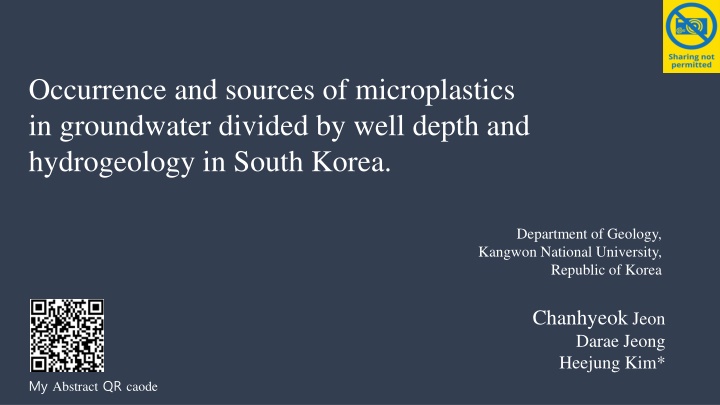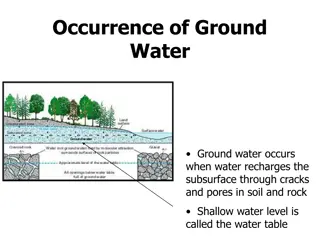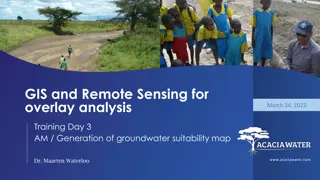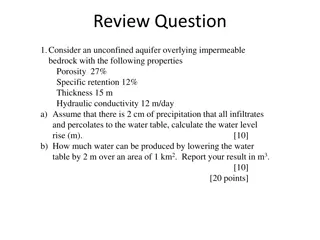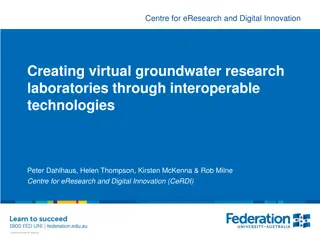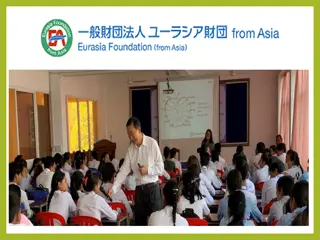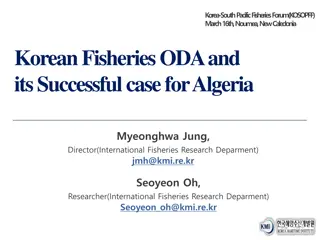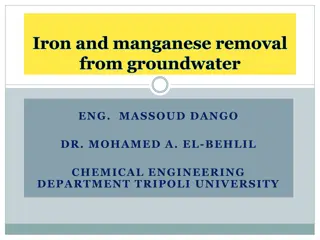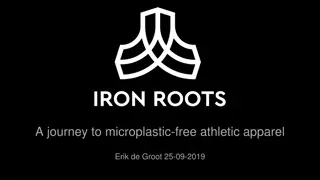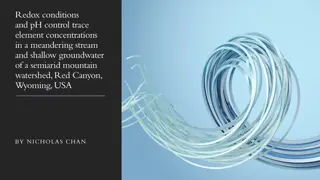Microplastic Occurrence in South Korean Groundwater by Well Depth and Hydrogeology
The study conducted by Kangwon National University in South Korea analyzed microplastic occurrence in groundwater from wells of varying depths and hydrogeological settings. Samples were collected from the National Groundwater Monitoring Network pipes in Gapyeong and Chuncheon. Water type analysis revealed variations based on region and proximity of wells, with correlations between plastic types and major anions. Results indicated a negative correlation between plastic amounts and certain ions. Scatter plots illustrated relationships between plastic quantities, well depths, and specific ions.
Download Presentation

Please find below an Image/Link to download the presentation.
The content on the website is provided AS IS for your information and personal use only. It may not be sold, licensed, or shared on other websites without obtaining consent from the author.If you encounter any issues during the download, it is possible that the publisher has removed the file from their server.
You are allowed to download the files provided on this website for personal or commercial use, subject to the condition that they are used lawfully. All files are the property of their respective owners.
The content on the website is provided AS IS for your information and personal use only. It may not be sold, licensed, or shared on other websites without obtaining consent from the author.
E N D
Presentation Transcript
Occurrence and sources of microplastics in groundwater divided by well depth and hydrogeology in South Korea. Department of Geology, Kangwon National University, Republic of Korea Chanhyeok Jeon Darae Jeong Heejung Kim* My Abstract QR caode
Study area Study area The study area includes Gapyeong and Chuncheon, which are the sources of drinking water for South Korea's capital city. Samples were collected from 13 NGMN pipes. Three of the wells are situated in the same vicinity and have varying depths of shallow, medium, and deep groundwater.
Study area_Additional Description NGMN (National Groundwater Monitoring Network) Major groundwater monitoring network established to study fluctuations in groundwater levels nationwide. The National Groundwater Monitoring Network consists of three components: the National Management Measurement Network, the National Monitoring Measurement Network, and the Rural Management Measurement Network. As of 2022, there are 700, 945, and 60 stations respectively throughout the country. The pipes are divided into three sections based on depth: shallow groundwater, medium groundwater, and deep groundwater, with average depths of 10, 30, and 80 meters respectively. Preventing microplastics from entering the atmosphere The top is always sealed to prevent debris from entering through the tubing.
Results Water Type When the major anions in the samples from the 13 wells were analyzed by region, they were found to be of the Mg-HCO3 type. However, in GA.DAL, they were found to be of the Ca-Cl type. Furthermore, when the Piper diagrams were separated by region, well depth, hydrogeology, and land use, it was discovered that the water type became more similar as the wells were located closer to each other. Similar water types were also found in the hydrogeology of igneous rocks. Similar water types were also found in wells located near residential areas.
Results Correlation analysis A Spearman correlation analysis was conducted to determine the correlation between plastic types and major anions. The results showed that PE had a strong negative correlation with NH4-N, while PP had a strong negative correlation with NO3-N. When the total amount of all plastics was correlated with the major ions, the strongest negative correlation was found with Ca.
Results Scatter plot Scatter plots were generated to describe the total amount and parameters of the plastics. First, the total amount of plastic and the depth of the well were plotted on the land use axis. It was observed that the deeper the well, the lower the total amount of plastic. When the plot was modified with NO3-N as the axis, it was found that the total amount of plastic increased as NO3-N increased. When the scatter plot was created with the total plastic and Ca as the two axes, it became evident that the total amount of plastic varied with the depth of the well.
